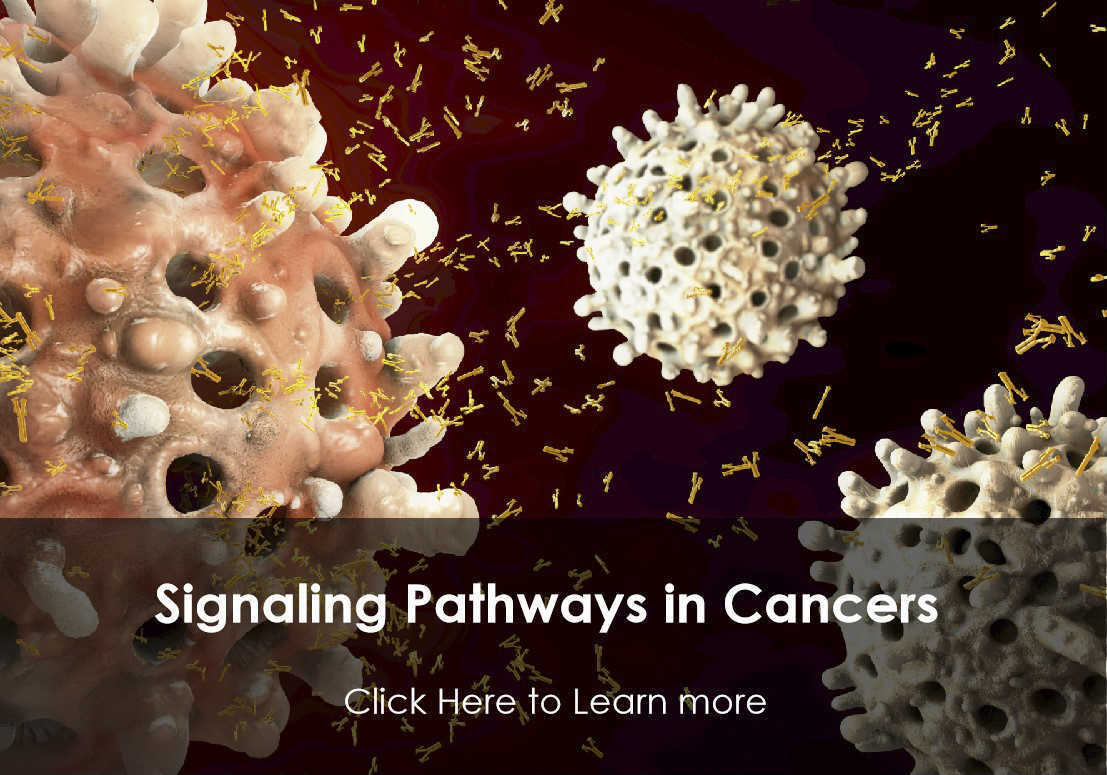HABP2
The protein encoded by this gene is an extracellular serine protease that binds hyaluronic acid and is involved in cell adhesion. The encoded protein is synthesized as a single chain, but then undergoes an autoproteolytic event to form the functional heterodimer. Further autoproteolysis leads to smaller, inactive peptides. This protease is known to cleave urinary plasminogen activator, coagulation factor VII, and the alpha and beta chains of fibrinogen, but not prothrombin, plasminogen, or the gamma chain of fibrinogen. [provided by RefSeq]
Full Name
hyaluronan binding protein 2
Function
Cleaves the alpha-chain at multiple sites and the beta-chain between 'Lys-53' and 'Lys-54' but not the gamma-chain of fibrinogen and therefore does not initiate the formation of the fibrin clot and does not cause the fibrinolysis directly. It does not cleave (activate) prothrombin and plasminogen but converts the inactive single chain urinary plasminogen activator (pro-urokinase) to the active two chain form. Activates coagulation factor VII (PubMed:8827452, PubMed:10754382, PubMed:11217080).
May function as a tumor suppressor negatively regulating cell proliferation and cell migration (PubMed:26222560).
May function as a tumor suppressor negatively regulating cell proliferation and cell migration (PubMed:26222560).
Biological Process
Cell adhesion Source: ProtInc
Proteolysis Source: MGI
Proteolysis Source: MGI
Cellular Location
Secreted. Secreted as an inactive single-chain precursor and is then activated to a heterodimeric form.
Involvement in disease
Thyroid cancer, non-medullary, 5 (NMTC5):
A form of non-medullary thyroid cancer (NMTC), a cancer characterized by tumors originating from the thyroid follicular cells. NMTCs represent approximately 95% of all cases of thyroid cancer and are classified into papillary, follicular, Hurthle cell, and anaplastic neoplasms.
A form of non-medullary thyroid cancer (NMTC), a cancer characterized by tumors originating from the thyroid follicular cells. NMTCs represent approximately 95% of all cases of thyroid cancer and are classified into papillary, follicular, Hurthle cell, and anaplastic neoplasms.
PTM
Proteolytic cleavage at Gly-23 or Met-27 can give rise to the 50 kDa heavy chain and cleavage at Arg-313 or Lys-319 can give rise to the 27 kDa light chain. The heavy chain can undergo further proteolytic cleavage at Lys-169 or Arg-170 to give rise to 2 inactive 26 kDa fragments and the light chain can undergo further proteolytic cleavage at Arg-480 to give rise to inactive 17 kDa and 8 kDa fragments (By similarity).
View more
Anti-HABP2 antibodies
+ Filters
 Loading...
Loading...
Target: HABP2
Host: Mouse
Antibody Isotype: IgG2a, κ
Specificity: Human
Clone: 1H4
Application*: IP, E
Target: HABP2
Host: Mouse
Antibody Isotype: IgG
Specificity: Human
Clone: CBXF-1001
Application*: WB, IC, P, C, E
Target: HABP2
Host: Mouse
Antibody Isotype: IgG2a, κ
Specificity: Human
Clone: CBFYH-0648
Application*: E
Target: HABP2
Host: Mouse
Antibody Isotype: IgG2a
Specificity: Human
Clone: CBFYH-0647
Application*: WB, IH
More Infomation
Hot products 
-
Mouse Anti-F11R Recombinant Antibody (402) (CBMAB-0026-WJ)

-
Mouse Anti-CD83 Recombinant Antibody (HB15) (CBMAB-C1765-CQ)

-
Mouse Anti-APOE Recombinant Antibody (A1) (CBMAB-0078CQ)

-
Mouse Anti-Acetyl-α-Tubulin (Lys40) Recombinant Antibody (V2-623485) (CBMAB-CP2897-LY)

-
Mouse Anti-CRYAB Recombinant Antibody (A4345) (CBMAB-A4345-YC)

-
Mouse Anti-CSPG4 Recombinant Antibody (CBFYM-1050) (CBMAB-M1203-FY)

-
Mouse Anti-AQP2 Recombinant Antibody (G-3) (CBMAB-A3359-YC)

-
Mouse Anti-C5AR1 Recombinant Antibody (R63) (CBMAB-C9553-LY)

-
Mouse Anti-CA9 Recombinant Antibody (CBXC-2079) (CBMAB-C0131-CQ)

-
Rabbit Anti-AKT3 Recombinant Antibody (V2-12567) (CBMAB-1057-CN)

-
Mouse Anti-ADAM29 Recombinant Antibody (V2-179787) (CBMAB-A1149-YC)

-
Mouse Anti-AKR1C3 Recombinant Antibody (V2-12560) (CBMAB-1050-CN)

-
Human Anti-SARS-CoV-2 S1 Monoclonal Antibody (CBFYR-0120) (CBMAB-R0120-FY)

-
Mouse Anti-ARHGDIA Recombinant Antibody (CBCNA-009) (CBMAB-R0415-CN)

-
Mouse Anti-DLG1 Monolconal Antibody (4F3) (CBMAB-0225-CN)

-
Mouse Anti-ENO2 Recombinant Antibody (85F11) (CBMAB-0276CQ)

-
Mouse Anti-ARIH1 Recombinant Antibody (C-7) (CBMAB-A3563-YC)

-
Mouse Anti-BZLF1 Recombinant Antibody (BZ.1) (CBMAB-AP705LY)

-
Mouse Anti-NSUN6 Recombinant Antibody (D-5) (CBMAB-N3674-WJ)

-
Rabbit Anti-Acetyl-Histone H3 (Lys36) Recombinant Antibody (V2-623395) (CBMAB-CP0994-LY)

For Research Use Only. Not For Clinical Use.
(P): Predicted
* Abbreviations
- AActivation
- AGAgonist
- APApoptosis
- BBlocking
- BABioassay
- BIBioimaging
- CImmunohistochemistry-Frozen Sections
- CIChromatin Immunoprecipitation
- CTCytotoxicity
- CSCostimulation
- DDepletion
- DBDot Blot
- EELISA
- ECELISA(Cap)
- EDELISA(Det)
- ESELISpot
- EMElectron Microscopy
- FFlow Cytometry
- FNFunction Assay
- GSGel Supershift
- IInhibition
- IAEnzyme Immunoassay
- ICImmunocytochemistry
- IDImmunodiffusion
- IEImmunoelectrophoresis
- IFImmunofluorescence
- IGImmunochromatography
- IHImmunohistochemistry
- IMImmunomicroscopy
- IOImmunoassay
- IPImmunoprecipitation
- ISIntracellular Staining for Flow Cytometry
- LALuminex Assay
- LFLateral Flow Immunoassay
- MMicroarray
- MCMass Cytometry/CyTOF
- MDMeDIP
- MSElectrophoretic Mobility Shift Assay
- NNeutralization
- PImmunohistologyp-Paraffin Sections
- PAPeptide Array
- PEPeptide ELISA
- PLProximity Ligation Assay
- RRadioimmunoassay
- SStimulation
- SESandwich ELISA
- SHIn situ hybridization
- TCTissue Culture
- WBWestern Blot

Online Inquiry







